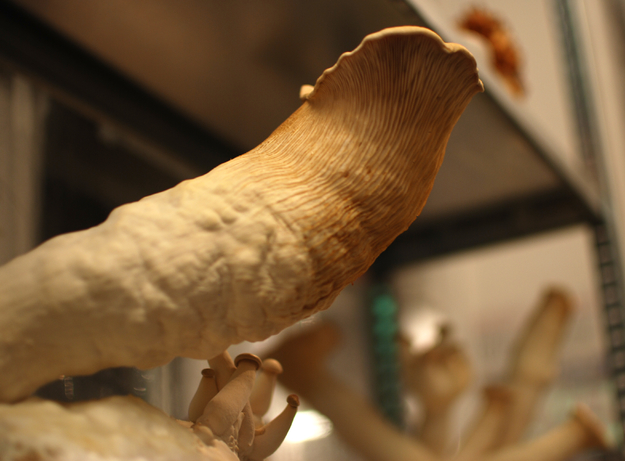About
Although it's easy to grow (most hardwoods, bit of wheat straw, and some cottonseed hulls), it's a relatively time- and space consuming 'shroom. It's worth the effort though: the king oyster is chockfull of a strong antioxidant called L-ergothioneine. (Actually, mushrooms are the best source of this particular antioxidant, levels being much higher than in for instance chicken liver.) The King, also known as the poor man's porcini, is native to the Mediterranean, the Middle East and North Africa. The fatty 'shroom smells nice and creamy, and stays crunchy when seared.
Growing proccess
Stage 1
A substrate mixture of wood and nutrients has been inoculated with King Oyster mushroom spores. The spores multiply and spread through the substrate. This stage, called “spawn run”, lasts between 12-16 days.
Stage 2
At this stage, called “primordia formation”, the root structure of the mushrooms, the mycelium, has now spread throughout the substrate. The substrate block forms a white and slightly rubbery shell. This stage lasts between 4-5 days.
Stage 3
The final stage is ‘fruitbody development’. Once fruitbodies are seen, the plastic casing is taken off 3/4 of the substrate block in order to allow the mushrooms to grow. The mushrooms are now ready to be harvested. This stage lasts between 4-8 days.




